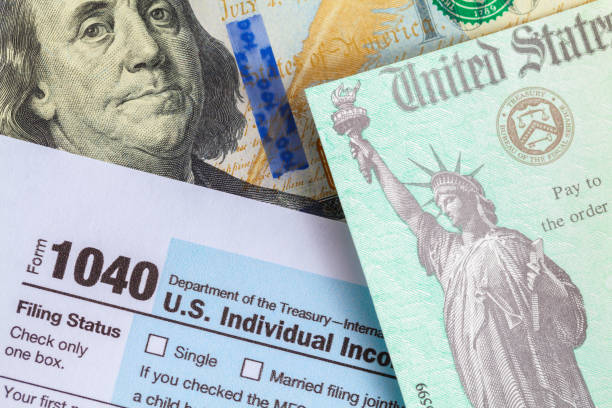The Senate narrowly approved a sweeping tax-cut package, aptly dubbed the “Big Beautiful Bill,” that promises $4.5 trillion in tax reductions. Vice‑President J.D. Vance broke a 50‑50 tie, sending the bill to the House, where it previously passed by a single vote. If successful, President Trump will be one signature away from enacting one of the most expansive tax reforms in US history.
Supporters see this as delivering on Trump’s 2024 campaign pledges, including eliminating taxes on tips and overtime. Critics, however, point to soaring government debt and deep cuts to social programmes.
Who Wins — and Who Loses?
The tax bill extends Trump-era tax cuts from 2017 and introduces new breaks aimed at working Americans. But analysis suggests this will disproportionately benefit high earners. According to Yale Budget Lab, the poorest 20% of households could lose around 2.3% of their income—about $560—while the top 1% stand to gain approximately 2.1%, or $32,265.
At a cost to the Treasury, the Congressional Budget Office (CBO) estimates net borrowing will increase by $3.3 trillion through 2034. Economic think-tanks predict the debt-to-GDP ratio could reach 130% during that period, with annual interest payments skyrocketing from nearly $1 trillion today to potentially $1.9 trillion by 2034.
Deficits and the Macro Picture
Treasury Secretary Scott Bessent has praised the proposal, arguing it aims for a budget deficit equating to 3% of GDP. Independent economists are less convinced, forecasting sustained 7% annual deficits.
While tariffs might generate increased revenue, the ballooning national debt poses risks. The Federal Reserve, amid near‑full employment and inflation above target, may struggle to keep rates in check—especially under the political spotlight demanding rate cuts.
Neil Shearing, chief economist at Capital Economics, remarks, “All of this is a pretty ugly mix.” Further, Innes McFee of Oxford Economics warns that mounting entitlement obligations in the 2030s could exacerbate long-term fiscal instability.
Healthcare Under Pressure
Healthcare funding bears a $1.1 trillion hit over the next decade. Medicaid would be hit hardest: eligibility tied to an 80-hour monthly work requirement and states absorbing more costs. The CBO estimates this change could leave 11.8 million more Americans without coverage by 2034.
This triggered notable pushback from some Republicans, including Senator Thom Tillis of North Carolina, who argues the bill undermines Trump’s prior commitments to maintain Medicaid access.
Defence and Border Security Boosted
In a bid to appeal to Trump’s core base, the package includes substantial increases in defence and homeland security budgets. Over the next decade, defence spending would grow by $150 billion, funding projects like the “Golden Dome” missile-defence system and unmanned naval vessels.
Homeland Security receives an additional $129 billion, including $45 billion each for the border wall and detention infrastructure. Senator Roger Wicker lauded the bill as laying the groundwork for a “generational upgrade” in national security.
Renewable Energy Takes a Hit
The clean-energy sector faces sharp reductions in support. Tax incentives introduced under Biden’s climate agenda will only apply to wind and solar projects operational by the end of 2027. While a last-minute decision spared an excise tax on renewables, green-energy advocates remain alarmed.
The Solar Energy Industries Association stated that, despite minor concessions, “this legislation undermines the very foundation of America’s manufacturing comeback and global energy leadership.”
A Risky Gamble
This is not just a tax bill; it is a statement of priorities. By doubling down on military and border security, while sharply cutting social and environmental programmes, lawmakers are choosing a path that favours immediate reassurance over long-term sustainability.
Proponents argue tax cuts will spur growth strong enough to offset borrowing. Yet economists counter that these kinds of deficits traditionally trigger higher interest rates, inflation, and financial instability. History warns us: unchecked fiscal deficits during economic booms rarely return positive outcomes.
Ultimately, while this bill may energise some sectors and reinforce ideological commitments, the broader economic trade-offs are stark. Unless growth far outpaces forecasts, future taxpayers—particularly the most vulnerable—will bear the cost of today’s political priorities. In that sense, the “Big Beautiful Bill” may well be a catalyst for turbulent fiscal times ahead.


